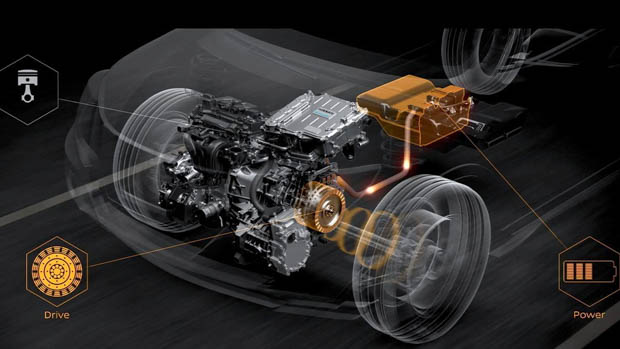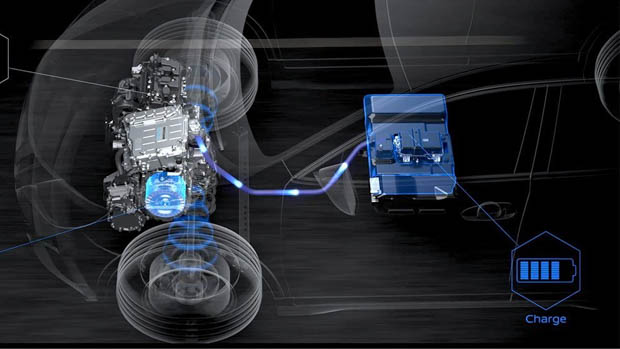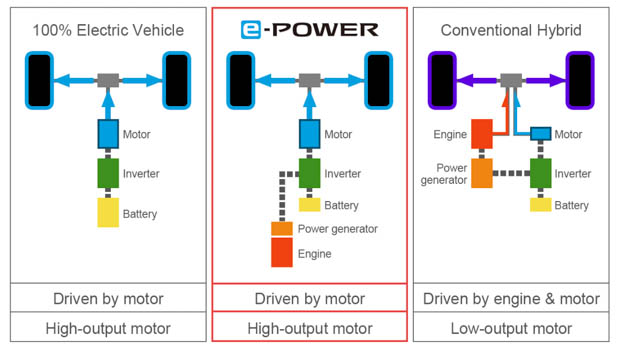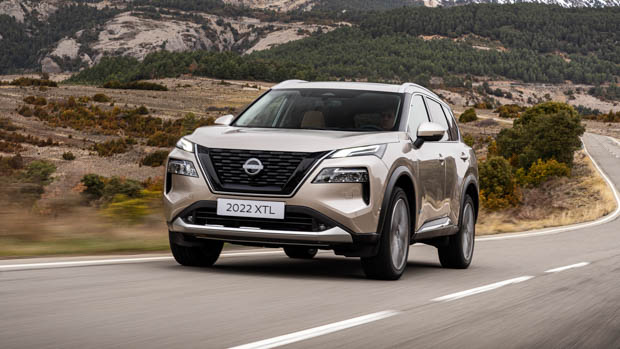-
Car Reviews
- All reviews
- Midsize SUVs
- Small cars
- Utes
- Small SUVs
- Large SUVs
- Large cars
- Sports SUVs
- Sports cars
- Vans
Latest reviews
- Car News
-
Car Comparisons
Latest comparisons
- Chasing Deals
Nissan’s E-Power system for the X-Trail is a series-hybrid setup that uses a petrol engine to power two electric motors
With the announcement of the electrified Nissan X-Trail and Nissan Qashqai models, the SUVs bring with them a new petrol-electric hybrid engine technology called E-Power.
Hybrid SUVs are nothing new, but Nissan’s E-Power system works very differently to the better-known tech used by Toyota’s cars in particular. So, how does E-Power work?
E-Power was first released overseas in 2016 with the Nissan Note, a small car exclusively sold in the Japanese market.
The E-Power system was announced for the Australian market in 2021 and will also be available soon in the smaller Nissan Qashqai model locally – and later, Nissan will also release an X-Trail hybrid SUV in Australia with E-Power tech.
Nissan’s E-Power hybrid system is essentially a hybrid drivetrain that operates in ‘series’ format – meaning that it works in a way that is fundamentally similar to the Holden Volt from 2011, and the upcoming Mazda MX-30 Rotary Range Extender. However, it is not a range extender system, strictly speaking.
But what does ‘series’ hybrid mean for E-Power? Nissan’s system works by combining a petrol engine with electric motors – but the petrol engine is not physically connected to the driven wheels via conventional driveshafts.
The petrol engine instead works as a generator to create electricity which is then fed to the electric motors, either directly via an inverter or by using energy stored in the compact battery.
Electricity runs through an inverter to the two electric motors (one on each axle) which then run power through output shafts directly to the wheels.
In the case of the new Nissan X-Trail E-Power, it only has a very small 2.1kWh battery pack. This means that the engine will likely run most of the time in order to power the electric motors.
For the Nissan X-Trail E-Power variant, a 1.5-litre turbocharged four-cylinder engine with variable compression has been installed to produce power for the generator, which then feeds electricity to two electric motors – one on the front axle and one on the rear.
The electric motors combine to make 157kW of power and torque is split up by 330Nm at the front and 195Nm at the rear axle, however Nissan says these can’t be combined as torque is always constantly distributed across the axles.
Nissan Australia states that the petrol engine will have a combined fuel consumption of around 6.1L/100km.
The Japanese manufacturer has stated that the E-Power system “allows you to enjoy all the benefits of an EV with the range confidence of an internal-combustion vehicle”.
Latest news
About Chasing cars
Chasing Cars reviews are 100% independent.
Because we are powered by Budget Direct Insurance, we don’t receive advertising or sales revenue from car manufacturers.
We’re truly independent – giving you Australia’s best car reviews.



